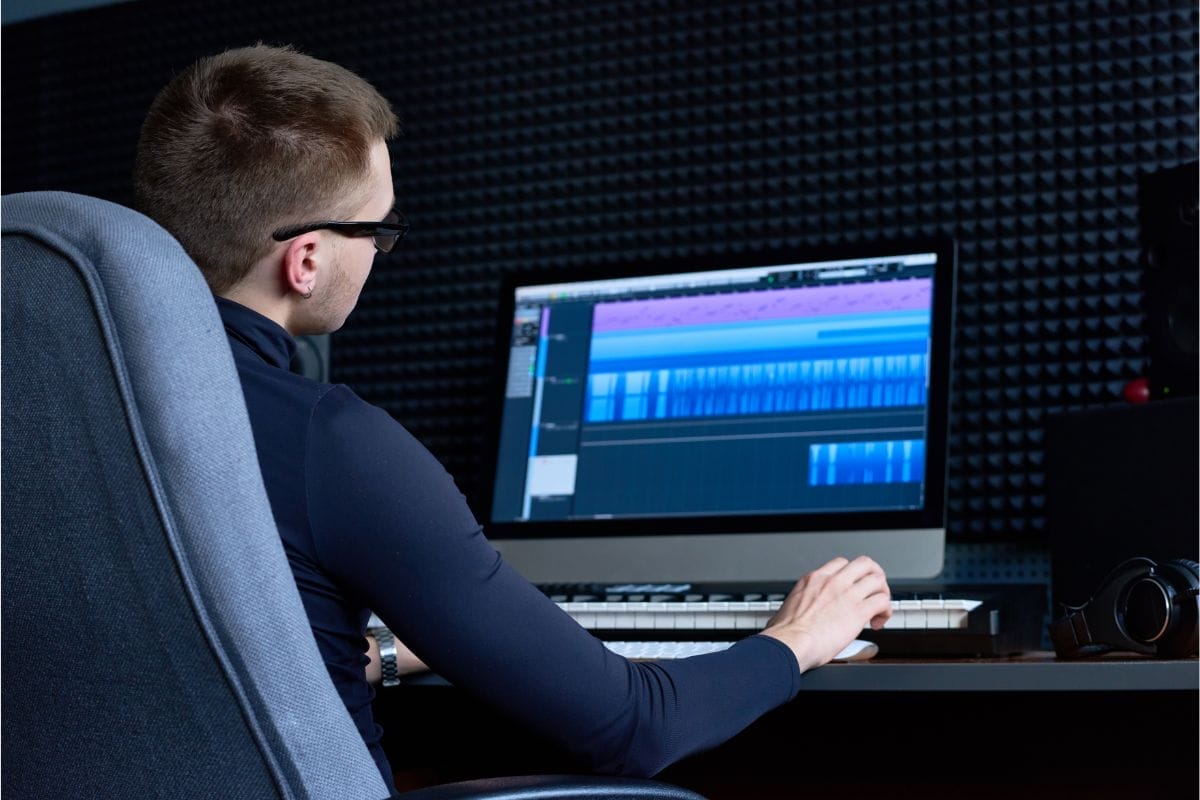Are you worried about copyright infringement? If you want to use songs or other music in your video, you should always ask permission from the owner.

Music is a powerful tool for marketing. It can add life to your videos, build excitement around your brand, and increase profit.
The problem is that using someone else’s song without their consent can get you into trouble.
You can use copyrighted music in your videos, but you must always give proper attribution. This means giving the artist or label name and link to where they can be found.
In this article we will explore what copyrighted music is and how to use it.
What Is Copyright?
Copyright law protects original works of authorship like books, movies, TV shows, computer programs, and music. But there are certain exceptions to copyright protection.
For example, when you make an educational video or film, you may need to use some copyrighted material as long as you give proper credit.
There are two types of rights protected by copyright: exclusive rights and nonexclusive rights.
Exclusive rights protect the author of the work against copying and distribution. These include the right to reproduce the work and distribute copies, among others.
Exclusivity lasts for the lifetime of the author plus 70 years. After 70 years, the exclusive rights become public domain and the work belongs to everyone.
The second type of rights is non-exclusive rights. Non-exclusivity means anyone can copy and distribute the work without restriction.
A good example of this would be a book with an open license. You could read the book, share it with friends, sell it at a garage sale.
You could do anything with the book as long as you don’t change the content or remove any identifying information.
The most common form of non-exclusive rights is fair use. Fair use allows you to use copyrighted materials in your own creative ways.
Fair use is a legal doctrine that permits limited use of copyrighted material without asking permission.
Examples of fair use include commentary, parody, news reporting, research, teaching, library archiving, and scholarship.
Using Copyrighted Music
Before you start creating, you need to decide whether you want to use copyrighted music in your project. There are pros and cons to using copyrighted music.
By understanding the benefits and risks, you can make an informed decision on whether to use copyrighted music.
Pros Of Using Copyrighted Music
Using copyrighted music gives you access to a wide variety of musical styles.
Whether you prefer classical, country, rap, rock, jazz, or electronic music, there are thousands of songs out there waiting for you to find them.
Using copyrighted music also makes it easy to create an authentic soundtrack for your video. With so many songs available, it’s easier than ever to find a perfect match.
Cons Of Using Copyrighted Music.
Using copyrighted music has its downsides too. One major disadvantage is that if you infringe upon someone else’s copyright, you could get sued.
Another downside is that using copyrighted music requires more time and effort than using free music. It takes time to find the right song, download it, sync it into your editing software, and then edit it.
And because you have to pay royalties every time you use the music, it can end up costing you a lot.
In addition to these disadvantages, it’s important to understand that using copyrighted music isn’t necessarily illegal.
The issue comes down to what kind of usage you’re doing. For example, simply linking to a YouTube video doesn’t violate copyright law.
But if you upload a clip from a copyrighted movie onto your blog, you may run afoul of the law.
To avoid getting caught, check with your local laws before uploading copyrighted music.
Steps To Using Copyrighted Music

No matter what your project entails, if you want to use copyrighted music you need to ensure you do it correctly to avoid breaking the law.
It’s best to get permission from the copyright holder before using any copyrighted material, even if you’re not making a commercial project.
One of the most commonly held beliefs about using copyrighted music is the idea that you can use any song you want as long as you clearly state that you don’t own it and give credit to the original artist.
You need to get two separate licenses for using a commercial song in your videos: the synchronization license to use that song.
And the master license for using the recording of that song (which is usually owned by the record label).
Synchronization licenses are acquired from the publisher. Publishers may vary from large companies (such as Sony Music) to individual songwriters who self-publish their work.
To get a master license, you need to contact the record label or, for independent musicians, the musician directly.
Why Does It Matter?
If you’re just making a home video for fun, then you don’t need to worry too much.
But, if you want to publish the video on YouTube or other streaming sites then you will need to be aware of the consequences of copyright infringement.
Especially if you are profiting off of these videos. This means you can be fined or even sued by the publishing company.
What Might Happen If You Don’t Get Permission?
The worst thing that could happen is that you get in trouble with the authorities. In some countries like Australia, there are strict laws against unauthorized use of audio recordings.
If you were found guilty of this crime, you could face fines of up to $18,000 AUD or even jail time.
So, how do you know whether you need to ask permission first? Well, it depends on where you live.
Some countries require that you seek permission from the owner of the copyright, while others allow you to make an exception for non-commercial purposes.
Other Options
There are many alternatives to getting permission to use copyrighted content. These include:
Using Public Domain Content
This includes songs that were written over 70 years ago. As long as they haven’t been rerecorded since then, they’re considered public domain.
Using Creative Commons Licenses
These licenses give you permission to use copyrighted works provided that you follow certain rules. They also offer flexibility in terms of when you can use the content.
There are four different types of CC licenses available, but only one of them allows you to use the music without asking permission.
Using Fair Use Laws
Fair use is a legal term used to describe the right to use copyrighted materials for educational, documentary, and critical purposes.
The U.S. has its fair use doctrine, which states that “the more transformative the new work, the less will be the significance of other factors, such as commercialism.”
Using Your Own Material
You can always create your own music for your videos. Of course, if you have a lot of money, you can hire a professional composer/songwriter to write something beautiful for you.
However, if you’re on a budget, you can still create great music yourself. It’s all about finding the right tools.
Conclusion
We hope that this article helps you understand what you should do before uploading any copyrighted material online.
Once you start using copyrighted content legally, you’ll find that it opens up a whole world of creativity.
You won’t have to rely on expensive royalty deals anymore. Instead, you can experiment freely with your favorite artists and their original creations. So, go ahead! Start creating today!
- Can We Use Envato Elements On Youtube Videos - July 15, 2022
- What’s The Highest Quality Image Format? - July 15, 2022
- Pexels Reviews: Is Pexels Legit? - July 15, 2022








